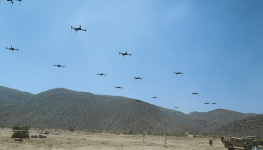daftandbarmy
Army.ca Dinosaur
- Reaction score
- 35,625
- Points
- 1,160
It's not that hard to understand when you consider that in 2010 we were still living in the fantasy scenario where Western forces would only fight counter-insurgency fights.
We didn't need 52 calibre barrels to kill dudes in man-jams and flip flops.
But JDAMS and SLCMs, OTOH




